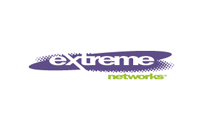Ericsson is introducing a new unified content delivery network (CDN) solution for both fixed and mobile networks.
The new Ericsson Media Delivery Network solution aims to integrate the company's advanced packet core and radio capabilities with a converged cache. The solution also adds management and service exposure layers for intelligent control and business model enablement.
Ericsson said its goal is to enable operators to enter the media value chain with profitable video delivery and to truly leverage their established consumer relationships. At the same time it offers content providers and enterprises cost-effective accessibility and guaranteed quality of experience across all networks, enabling the delivery of video, web content, and app downloads while accelerating commerce.
"Yesterday our mobile devices were telephones, today they are everything; our TVs, our banks, our conference rooms. The recent Ericsson Mobility Report shows that mobile data traffic will grow 12 times by 2018, and this is only the start of the tremendous transformation we will witness. The Ericsson Media Delivery Network solution breaks the boundaries of traditional CDN solutions, offering operators a single, intelligent, and agile management platform for superior efficiency, optimization, velocity of service, and monetization opportunities," stated Per Borgklint, Senior Vice President and Head of Business Unit Support Solutions, Ericsson.
- In 2011, Ericsson and Akamai Technologies announced an exclusive strategic alliance focused on bringing to market mobile cloud acceleration solutions aimed at improving end-user Internet experiences such as mobile ecommerce, enterprise applications and internet content. The companies will jointly develop solutions for delivering content and applications to mobile devices.
- Ericsson has subsequently introduced CDN capabilities in its Smart Services Routers.

















